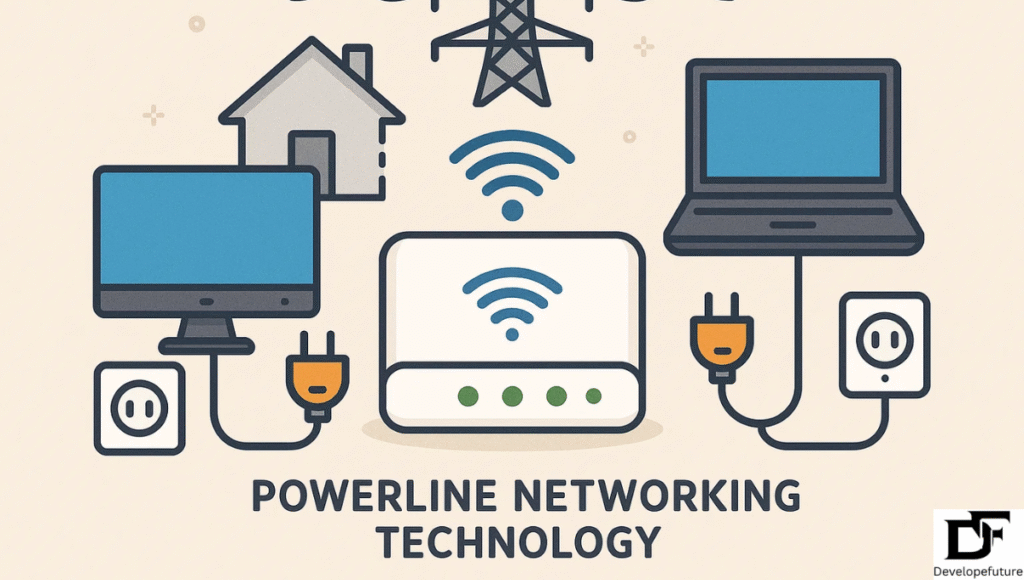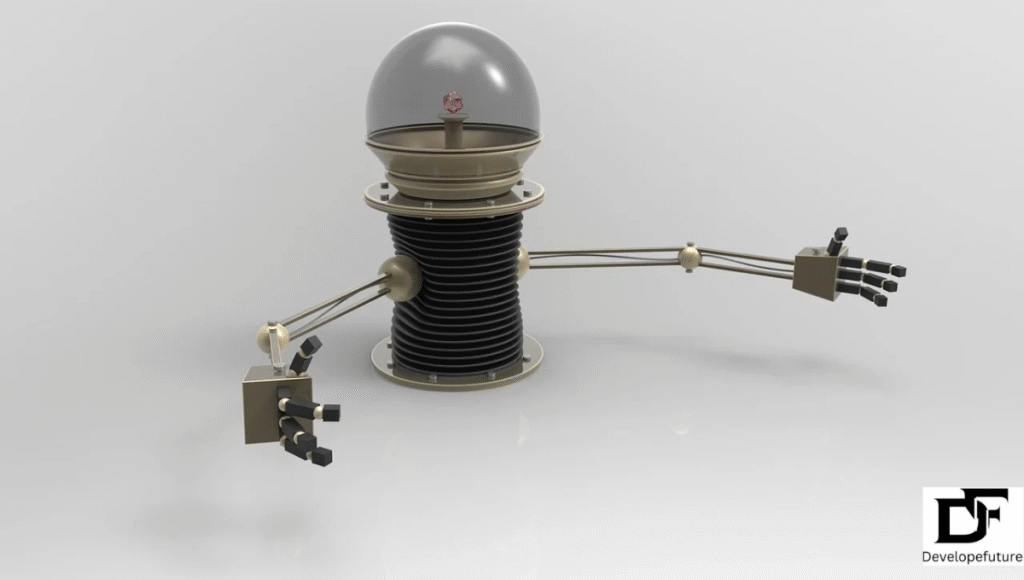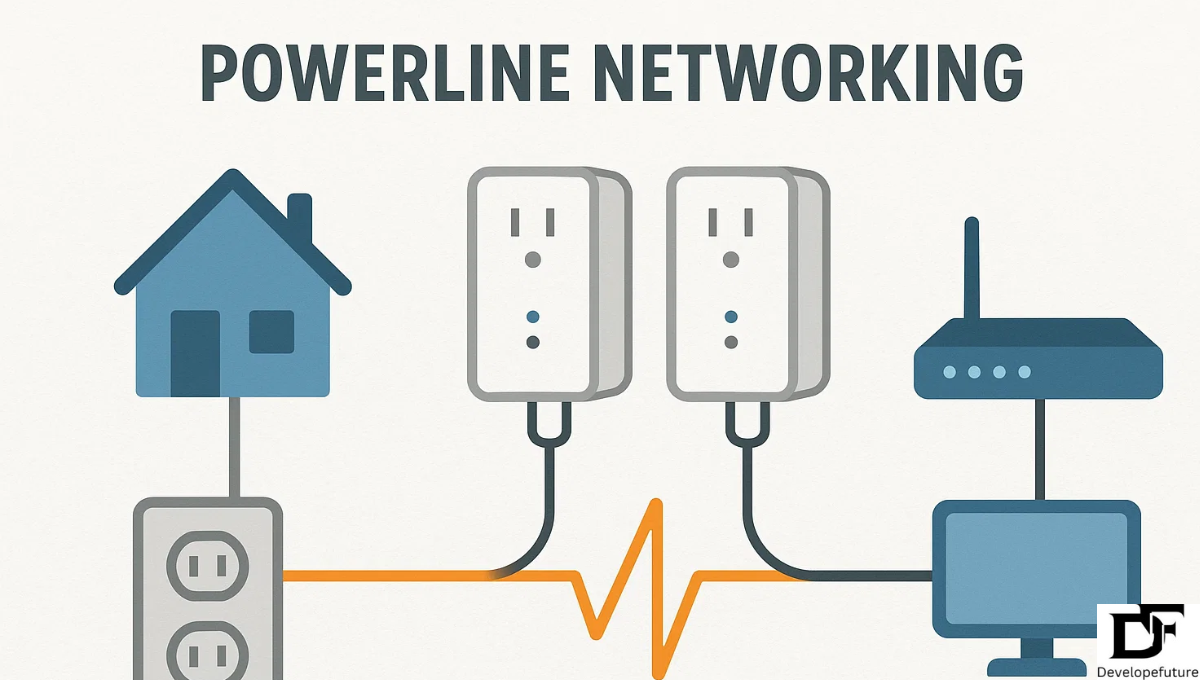In today’s digital age, reliable internet connectivity is essential. Households and businesses are continually seeking efficient ways to expand network coverage. In contrast, Wi-Fi and Ethernet cables remain the most common solutions. Another lesser-known yet highly effective option is powerline networking. This technology leverages the existing electrical wiring inside a building to transmit data. It’s turning every power outlet into a potential internet access point.
The concept may sound futuristic. But powerline networking technology has been around for decades. And it has evolved significantly with modern innovations. For people living in large homes, apartments with thick walls, and in offices. Where Wi-Fi signals struggle to reach. Powerline networking offers a practical and cost-effective solution. It bridges the gap between convenience and performance. It is eliminating the need for extensive cabling or expensive infrastructure upgrades.
So, which statement best describes the use of powerline networking technology? The simplest explanation is: “Powerline networking uses existing electrical wiring in a building to send data. And extend network connectivity through standard power outlets.” But to truly understand its applications, benefits and limitations. Let’s dive deeper into how this technology works. Where it shines, and why it continues to be a reliable option in today’s hyperconnected world.
Table of Contents
What Exactly Is Powerline Networking Technology?
Powerline networking, also known as Powerline Communication (PLC). This is a method of transmitting internet data through the electrical wiring. It is already present in homes and offices. Instead of laying new Ethernet cables, adapters plug into wall sockets. We use the copper wiring as a medium to carry network signals. This allows devices in different rooms to connect to the internet as if they were wired directly.
At its core, the technology is based on a principle. That electrical wiring can carry more than electricity. By transmitting high-frequency data signals over the same wires that supply power. Powerline enables digital communication without interfering with normal electrical usage. It’s a hybrid approach. That combines the reliability of wired connections with the flexibility of Wi-Fi distribution.

How Powerline Networking Works Behind the Scenes
Powerline adapters are the backbone of this technology. A typical setup includes at least two adapters. One connected to the router and plugged into a wall outlet. And another placed in the room where internet access is needed. These adapters communicate with each other over the home’s wiring. It effectively turning the electrical grid into a data pipeline.
Modern powerline adapters often include built-in Ethernet ports and sometimes Wi-Fi access points. This allows them to serve multiple purposes. It is connecting smart TVs and gaming consoles. Its improving wireless coverage in hard-to-reach rooms. The process is seamless for us. It is requiring minimal setup beyond plugging in the devices and pairing them.
Advantages of Using Powerline Networking Technology
1. Convenience and Simplicity
One of the biggest advantages is its plug-and-play nature. Unlike Ethernet cables, which require drilling through walls or running long wires across rooms. Powerline adapters only need a standard wall outlet. This makes them a quick solution for extending connectivity without complicated installations.
2. Stable and Reliable Performance
Wi-Fi is often prone to interference from walls, furniture, and other electronic devices. Powerline bypasses these limitations by using a wired medium. While speeds depend on the quality of wiring and distance. It typically provides more stable connections than weak Wi-Fi signals.
3. Cost-Effectiveness
For households that need better connectivity. But want to avoid the expense of professional Ethernet installation. Powerline is a budget-friendly alternative. A set of adapters is usually affordable. And eliminates the need for complex rewiring projects.

Limitations and Challenges of Powerline Networking
1. Dependence on Electrical Wiring Quality
The performance of the powerline heavily depends on the quality. And the layout of the building’s electrical wiring. Older homes with outdated wiring may experience reduced speeds or inconsistent connections.
2. Interference from High-Powered Appliances
Household appliances such as microwaves, washing machines, or vacuum cleaners can cause interference in the electrical system. This may reduce the effectiveness of powerline adapters when used on the same circuit.
3. Limited Cross-Circuit Functionality
Powerline networking generally works best when adapters are on the same electrical circuit. In some cases, connecting across different phases or breaker panels can significantly impact performance.
Use Cases: Where Powerline Networking Makes the Difference
Extending Connectivity to Dead Zones
In large homes, Wi-Fi signals often fail to penetrate thick walls or reach upper floors. Powerline adapters provide internet access in these dead zones by transforming nearby outlets into wired access points.
Supporting High-Bandwidth Activities
Streaming 4K content, online gaming, and video conferencing demand stable connections. Powerline networking provides the necessary bandwidth for such activities. It often outperforming Wi-Fi in stability.
Small Office and Business Solutions
In offices where running Ethernet cables is impractical. Powerline networking serves as an efficient alternative for connecting many workstations. Without interrupting the building’s infrastructure.
Internet of Things (IoT) Integration
As smart devices become more common, powerline networking helps ensure. That even distant devices. Such as security cameras or smart thermostats remain reliably connected to the network.

Comparing Powerline Networking to Other Technologies
Powerline vs. Wi-Fi Extenders
While Wi-Fi extenders rebroadcast signals. They often suffer from reduced speeds and higher latency. Powerline adapters, on the other hand, create a direct wired connection. Which usually results in better performance for bandwidth-intensive tasks.
Powerline vs. Ethernet Cabling
Ethernet remains the gold standard for performance, offering faster and more reliable connections. But installing Ethernet cables can be labor-intensive and costly. Powerline provides a compromise—less speed than Ethernet but far greater convenience.
Powerline vs. Mesh Wi-Fi
Mesh Wi-Fi systems provide seamless coverage. Across large areas by using many interconnected nodes. They are excellent for wireless flexibility but can be more expensive. Powerline networking is a more affordable option. For those who rank wired stability in specific areas.
The Evolution of Powerline Networking Standards
Powerline has undergone significant improvements since its start. Early versions provided modest speeds of a few Mbps. It is suitable only for basic internet browsing. Today’s standards, such as Home Plug AV2, support gigabit speeds. It is making them capable of handling high-definition streaming and online gaming.
Future developments promise even faster transmission rates and better efficiency. It is transforming powerline networking into a mainstream solution alongside fiber optics and advanced Wi-Fi technologies.

Security Considerations in Powerline Networking
Data traveling over powerline adapters is encrypted, typically using AES (Advanced Encryption Standard). This ensures that information remains secure and private. Even though it is transmitted through household wiring.
However, as with all networking technologies, proper configuration is key. We should enable strong passwords and avoid using outdated adapters. That lack modern encryption protocols. Security-conscious households and businesses can rest assured that. When properly set up, powerline networking is as safe as traditional Ethernet connections.
The Future of Powerline Networking Technology
While Wi-Fi 6, fiber internet, and 5G dominate conversations about connectivity. Powerline networking still has a role to play. It can combine wired reliability with plug-and-play convenience. It makes it ideal for homes and offices struggling with Wi-Fi limitations.
As smart homes grow in popularity and the number of connected devices continues to rise. Powerline may see renewed adoption. Integrating Wi-Fi access points into powerline adapters. Further strengthens its relevance in hybrid networking environments.
Which Statement Best Describes Powerline Networking Technology?
To bring it all together, the statement that best describes this technology is. “Powerline networking uses the electrical wiring in a building to transmit internet data. It turning standard power outlets into network access points.”
This description captures the essence of how it works and why it is beneficial. It’s about making connectivity accessible where Wi-Fi or Ethernet may fall short. Without reinventing the wheel or requiring extensive modifications to the building’s infrastructure.
FAQs
Is Powerline faster than Wi-Fi?
Powerline networking can be faster and more stable than Wi-Fi in certain environments. Where wireless signals are weak or heavily obstructed. However, Ethernet still offers the highest speeds overall.
Can powerline networking work in any house?
It works best in modern homes with updated wiring. Older homes may experience reduced performance due to wiring limitations.
Does power line interfere with electrical appliances?
High-powered appliances can cause minor interference. But modern adapters are designed to minimize the impact.
Is powerline networking secure?
Yes. Data is encrypted, typically using AES. It is making it safe for household and business use when configured properly.
Should I choose powerline or mesh Wi-Fi?
If you need reliable wired connections. For activities like gaming or streaming, powerline is an excellent choice. For broader wireless coverage across multiple devices, mesh Wi-Fi may be better.
Conclusion
Powerline networking technology is a hidden gem in the world of internet connectivity. By harnessing existing electrical wiring. It offers a practical middle ground. Between the flexibility of Wi-Fi and the reliability of Ethernet. From eliminating dead zones to supporting demanding online activities. It delivers stable connections where traditional methods struggle.
While it has its limitations, such as dependency on wiring quality and potential interference. Its advantages are in convenience, cost-effectiveness, and security. It makes a valuable option for many users. In an era where seamless internet access is non-negotiable. Powerline stands out as a smart solution. That turns every wall socket into a gateway to the digital world.

